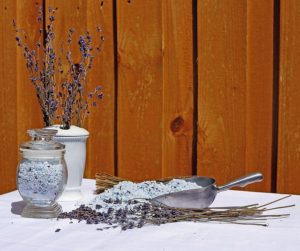Practical Tips to Relieve Neck, Shoulder and Low Back Pain

Working in an office the whole day will most likely cause muscle tightness and low back pain. Recent research has shown that sitting for long periods of time is linked to higher risks of cardiovascular disease and diabetes (4). Moreover, a sedentary lifestyle can lead to neck, shoulder, and low back pain. Add in your daily dose of stress, and you have a recipe for chronic inflammation in the body.
If you are experiencing muscle tension, these practical tips can help you. They are easy to follow and can make a difference in your day-to-day life.
Stretching & Exercise:
Sitting for long hours impairs circulation. It also restricts movement. Exercise, on the other hand, promotes energy flow and vitality. So, stretch every hour if you have been sitting for too long.
During your breaks, get out of the office and take deep breaths. If possible, walk on a daily basis for at least 30 minutes at a time. Whenever you can, take the stairs instead of the elevator.
If the weather permits, stay outside after lunch. Spend some times in a natural setting. Daily exercise keeps your joints flexible and fuels the body with oxygen.
Furthermore, it clears the mind and helps you stay focused on your tasks. Stay active as much as possible, because it can make a difference at the end of the day!

Magnesium Baths:
Magnesium is a mineral found in foods such as leafy greens, nuts, grains, and dark chocolate (1). It plays a major role in maintaining nerve and muscle function. It is estimated that more than 75% of the US population doesn’t get enough magnesium in their diet (3).
Unfortunately, a deficiency in this mineral can create muscle cramps and muscle tension. Although magnesium can be taken orally, it can also be absorbed through the skin.
Epsom salts contain magnesium sulfate which can soften tight muscles. Take a full warm bath with Epsom salts for 45 minutes, once a week. This simple home remedy can provide instant relief. It can also help you relax at the end of a long day. Consider applying magnesium topically, as it can ease soreness at the applied area.
Castor Oils Packs:
Castor oil packs have proven to be a good treatment for shoulder and low back pain. Castor oil is derived from the beans of the plant Ricinus communis. This plant has anti-inflammatory properties.
Apply the oil to the affected area. Then, add a hot pack and leave it for 20 minutes. This can relieve sore muscles and decrease pain. This home remedy is very effective, but it can be time-consuming.
Castor oil packs are safe and have no side-effects when used topically. In my clinic, I usually prescribe these remedies and combine them with the following:

Acupuncture:
Cupping Therapy:
Cupping therapy is another ancient form of healing. The therapist places specific cups on different areas of the body. Then, he or she creates a negative pressure by sucking the air out of the cups. This technique causes the skin to temporarily turn red, purple, or dark red.
The benefits include increased blood flow and a release of toxins in the body. It can also reduce pain and inflammation. Fortunately, the resultant bruises are not permanent.
During the Rio Olympic games in 2016, Michael Phelps popularized cupping therapy by showing off his marks while swimming for gold! For those who do not like needles, cupping is an alternative, effective option to treat low back pain.
Conclusion:
Muscle tension is a very common complaint. At least 80% of my patients suffer from neck, shoulder, or low back pain. The chronic use of electronic devices such as computers and cell phones is a major culprit.
On the bright side, there are many options available for those who want to break free from this condition. If you are suffering from low back pain, consider these treatments. They are safe and can provide instant relief.
As naturopaths, we integrate these modalities into our practices to provide the best outcome possible. Call my office for further details. My clinic is located in North York, Toronto.
keyword: Toronto Back Pain
References:
(1) https://www.healthaliciousness.com/articles/foods-high-in-magnesium.php
(2)
(3) USA Recommended Daily Allowance for Magnesium pi.oregonstate.edu/mic/minerals/magnesium
(4) http://www.health.harvard.edu/blog/much-sitting-linked-heart-disease-diabetes-premature-death-201501227618

 3292 Bayview Ave. Suite 304
3292 Bayview Ave. Suite 304 North York, Ontario
North York, Ontario (647) 707 8706
(647) 707 8706 info@torontogreennaturopath.com
info@torontogreennaturopath.com
